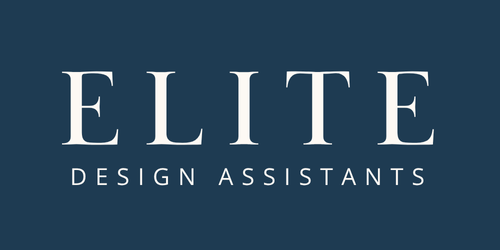What Your Client Welcome Packet Really Needs
/Most designers have a client welcome packet. A few pretty pages, a thank you note, a brief process overview... and that's it.
Not exactly the first impression that screams “you’re in the hands of a polished professional who’s about to make your dream home a reality.”
If you want your welcome packet to actually set the tone for an incredible client experience — one where clients trust you, respect your process, and are excited to work with you — you need a lot more than just a pretty PDF.
Here’s what your client welcome packet really needs:
1. A Personal, Heartfelt Welcome (Not Just "Thanks for Hiring Me")
Start with a genuine, warm note that shows you see your client as more than just a transaction.
Include:
A thank you that’s specific to them (“We’re so excited to design your first family home!” vs. “Thanks for choosing us!”)
A sentence about what’s coming next so they already feel guided ("Here’s what happens now: we kick off with an in-depth design consultation to dive into your vision.")
✨ Pro Tip: Include a printed, handwritten card inside your packet if you send a physical version. It instantly feels personal and premium.
2. Your Signature Design Process (Explained Like a Human, Not a Robot)
Most welcome packets list the phases of design... but they read like dry textbook chapters. Clients don’t care about "Phase 2: Design Development" — they want to know what’s happening to them at every step.
Include:
What’s happening during each phase (in simple language)
What the client’s role is (“You'll approve selections and provide feedback during this phase.”)
What big milestones they can look forward to (like floor plan reviews or install day!)
✨ Pro Tip: Visual timelines or icons help clients quickly understand the flow without feeling overwhelmed.
3. Clear Communication Guidelines (The Best Boundary Setter)
One of the biggest causes of designer burnout? Messy, endless client communication. You can (and should) set expectations from day one about how and when clients can reach you.
Include:
Your office hours
Your preferred methods of communication (email, project management app, etc.)
Average response time ("We reply within 24-48 business hours.")
Emergency protocols, if needed (especially for construction!)
✨ Pro Tip: A communication cheat sheet ("Here’s how to reach us fastest depending on your need!") feels helpful, not restrictive.
4. Investment Overview (Because Transparency Builds Trust)
Even if your client has already seen your fees, your welcome packet is the place to reinforce it — clearly and confidently.
Include:
Summary of your service fees (even if already signed)
How purchasing/procurement works (explain markups if applicable)
What happens with third-party contractors (are you hiring them? is the client?)
✨ Pro Tip: A one-page “Money FAQ” prevents awkward questions later (like “Why do you charge a markup?” or “When will I be billed next?”).
5. Deliverables and Decision Deadlines (Keep the Train Moving)
Projects can get stuck for months because clients drag their feet on decisions. Lay out from the start what they’ll be expected to approve, and when.
Include:
What deliverables they’ll receive (concept boards, 3D renderings, floor plans, etc.)
How long they’ll have to review/approve (example: "Please return feedback within 3 business days.")
What happens if approvals are delayed (your timeframes shift accordingly)
✨ Pro Tip: Frame it positively — not like you’re policing them, but like you’re keeping the momentum strong to meet their dream timeline.
6. Project Management Access (If You Use a System — Brag About It!)
If you use project management software (like Asana, Trello, Ivy, Mydoma, etc.), your welcome packet is the place to introduce it proudly.
Include:
How clients will log in (and what they'll see)
What to expect inside (design documents, selections, invoices)
How project updates will happen (daily? weekly?)
✨ Pro Tip: Clients love feeling like there’s a “hub” — it makes them feel taken care of and reassured, even if there’s a gap between big meetings.
7. Style and Service Promise (Make It About Them)
This is the subtle but powerful piece hardly anyone talks about: Remind your clients what your mission is — for them.
Include:
A short statement about what you’re committed to delivering (beautiful, functional homes that support their lifestyle, etc.)
A line about how the collaboration will feel (“Our goal is to make this process exciting, stress-free, and inspiring for you.”)
✨ Pro Tip: End your packet with a sentence that sets the tone:
"We’re so honored to partner with you on creating a space you’ll love for years to come. Let’s make magic together."
Final Thoughts
Your welcome packet isn’t just paperwork. It’s your first experience of client care, client education, and client protection — all wrapped into one.
A polished, thorough packet makes you look 10x more professional — but more importantly, it calms client anxiety before they even know they have it. It eliminates confusion. It builds trust. It makes them so excited to start.
And that’s what truly sets standout designers apart.
xx, Danae
P.S. If you’re reading this and thinking, "Yikes, my welcome packet is only two pages and was made in Canva..." — no shame! This is your chance to level up.
(And trust me, your future self will thank you for it.)









